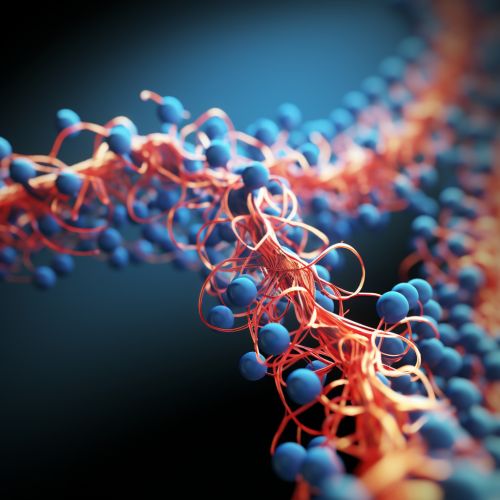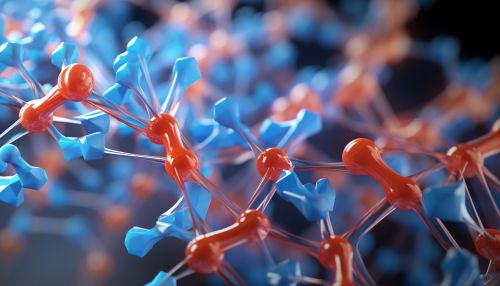Histone Acetyltransferase
Introduction
Histone acetyltransferase (HAT) is a type of enzyme that plays a crucial role in the regulation of gene expression. This enzyme modifies histones, the protein components of the nucleosome, by adding an acetyl group to the lysine residues. This process is known as histone acetylation and is a key part of the epigenetic control of gene expression.


Function
HATs are involved in the process of chromatin remodeling, which is essential for the regulation of gene expression. By acetylating the lysine residues on the histones, HATs reduce the positive charge of the histones, weakening their interaction with the negatively charged DNA. This results in a more relaxed chromatin structure, allowing transcription factors and other regulatory proteins to access the DNA and initiate gene expression.
Types of Histone Acetyltransferases
There are several types of HATs, which can be broadly divided into two categories: A-type and B-type. A-type HATs are primarily located in the nucleus and are involved in the regulation of gene expression. They include enzymes such as p300 and CBP, GCN5, and TIP60. B-type HATs, on the other hand, are located in the cytoplasm and are involved in the assembly of newly synthesized histones. They include enzymes such as HAT1 and HAT2.
Role in Disease
Abnormalities in HAT activity have been linked to a number of diseases, including cancer. Overactivity of HATs can lead to excessive gene expression, which can contribute to the uncontrolled cell growth seen in cancer. Conversely, underactivity of HATs can lead to reduced gene expression, which can also contribute to disease development. For example, mutations in the gene encoding the HAT enzyme CBP are associated with Rubinstein-Taybi syndrome, a rare genetic disorder characterized by intellectual disability and physical abnormalities.
Therapeutic Potential
Given their role in the regulation of gene expression, HATs are being explored as potential therapeutic targets for a variety of diseases. For example, drugs that inhibit HAT activity are being developed as potential treatments for cancer. These drugs, known as HAT inhibitors, work by blocking the activity of HATs, thereby reducing the expression of genes that contribute to cancer development. Similarly, drugs that enhance HAT activity are being explored as potential treatments for diseases characterized by reduced gene expression, such as Rubinstein-Taybi syndrome.
